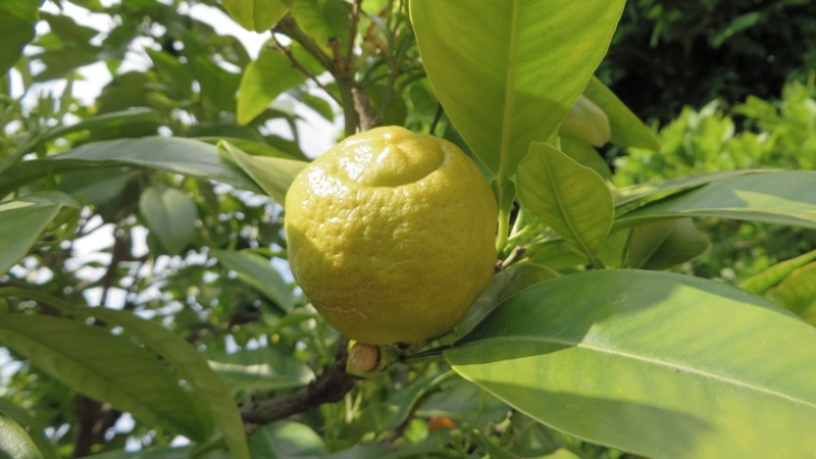Bitter Orange or Seville Orange
Citrus × aurantium 'Adamsappel'
Rue family (Rutaceae)
Soothing orange blossom
The most well known member of the rue family is the citrus. Unlike an ordinary orange (Citrus sinensis) the fruit of the Seville orange (Citrus x aurantium) tastes bitter. These bitter substances stimulate the appetite and are thus used in many aperitifs, such as Cointreau and the Dutch drink Oranjebitter. The aromatic peel of the Seville orange is also used in brewing witbier (white beer) and, in particular, in the preparation of Belgian beers.
The peel is also used in traditional Chinese medicine. Seville orange is commonly used for making marmalade. The sweetly scented, white flowers contain a substance that is used as a fragrance for perfume and a flavouring in cola. Orange blossom oil (neroli oil) has been scientifically shown to increase serotonin levels in the brain and thus induce a quiet, slightly euphoric and relaxed feeling.
Present in:
Themes
Crown jewel of the Twickel Estate.
The variety 'Adam's apple' or 'Adam's bite' can be recognized by a ring-shaped incision slightly below the top, which is said to represent Adam's bite into the fruit of the tree of knowledge and resulted in him and Eve being expelled from Paradise. It is a cultivar from the Dutch collections and shortly after the 17th century was no longer mentioned in the literature. It is rare but still present in the collections of Het Loo Palace and on the Twickel Estate.
Fragrant flowers and fruits.
Sour oranges are used principally to make marmalade. There is great demand for 'sour orange oil', which is extracted from the rind and used for flavouring confectionery, ice cream, cakes, puddings, chewing gum, soft drinks, liqueurs and pharmaceuticals. The dried peel of the immature fruit yields the essential oil, 'neroli oil'. Neroli oil or 'neroli bigarade oil' is distilled from the flowers of the sour orange and is sometimes used as a flavouring in confectionary, soft drinks and liqueur, ice cream, cakes and chewing gum. The ripe peel of the sour orange contains 2.4 to 2.8 percent neohesperidin dihydrochalcone, a substance that is twenty times sweeter than saccharin and two hundred times sweeter than cyclamate; the green skin can contain 14 percent neohesperidin dihydrochalcone.
The flowers yield nectar for honey bees.
Details
| Distributions: | Only found in cultivation. |
|---|---|
| Habitat: | In gardens |
| Year cycle: | Perennial (polycarpic evergreen) |
| Flower color: | White |
| Notes on fruits: | Peel with circular groove on top. |
